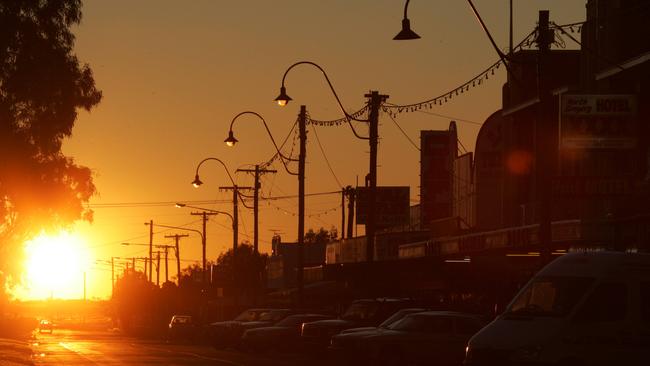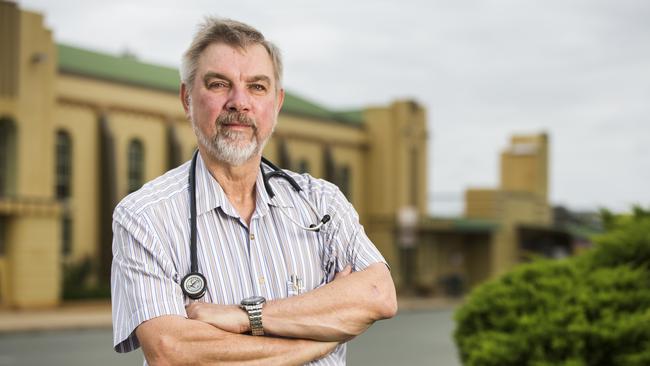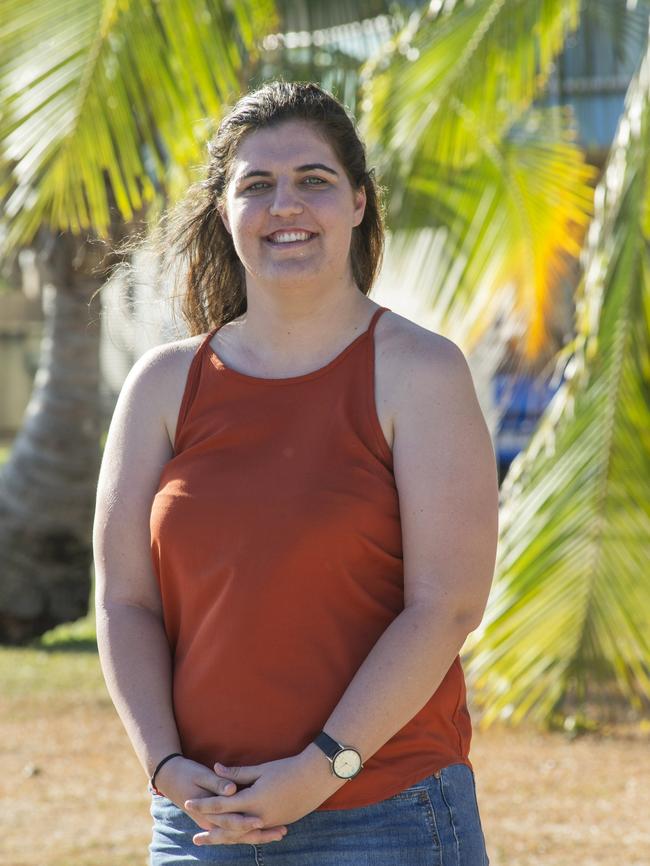Queensland jobs: Cops, teachers, doctors shunning country towns
QUEENSLAND’S country towns are facing a health and education crisis with many communities unable to attract doctors, dentists, teachers, police officers and social workers.
QLD News
Don't miss out on the headlines from QLD News. Followed categories will be added to My News.
QUEENSLAND’S country towns are facing a health and education crisis with many communities unable to attract trained professionals including doctors, dentists, teachers, police officers and social workers.
Industry leaders are battling to bring highly skilled workers to the bush, as Regional Australia Institute figures show the service gap is widening as just 5 per cent of small towns have access to a dentist, 18 per cent have a GP and 6 per cent a psychologist.
During the study measuring service availibility between 1981 and 2011, researchers found significant service declines in Queensland towns including Childers, Tully and Winton.
In Childers, 50km south of Bundaberg, the number of registered nurses fell from 10 to three – a 70 per cent drop – while the number of primary school teachers fell 75 per cent to 65 per cent lower than the national average and GP numbers dropped by 40 per cent.
In Tully, 200km north of Townsville, the number of registered nurses dropped from 18 to eight, a 56 per cent drop and 65 per cent lower than the national average.
The number of primary school teachers fell from 20 to nine, 40 per cent lower than the national average per capita, while secondary teacher numbers fell by 50 per cent; while in Winton nurse numbers fell 37 per cent to 12, the number of secondary teachers dropped by 38 per cent and police numbers halved.

Researchers estimated that a lack of access to GPs, dentists and other health services in rural and remote areas across Australia resulted in 60,000 preventable hospital admissions each year.
South West Hospital and Health Service Executive Director Medical Services Dr Chris Buck said a major hurdle was making sure trainees had enough supervision, capitalising on a “tsunami of medical graduates”.
“The problem is that in order to gain that training, they need they have to be mentored and actually have appropriate supervision so we only have a few sites that can actually offer that supervision,” he said.
“So it’s one thing to say that we have all these graduates so therefore the problem should be solved, but the next hurdle we have to get over now that we’ve got an excess of graduates out there is that we need to find a way to train them in their appropriate specialities.”
Australian Dental Association Queensland president Professor Laurie Walsh said dentist to population ratios in rural Queensland had improved dramatically since 2000 after dentist schools introduced rural training programs.
“Students who had a good placement experience in a remote area are much more likely to go back there and work,” he said.
“We’ve seen that happen with our students.”
Queensland Teachers Union president Kevin Bates said financial incentive schemes introduced in the mid-1990s had only increased marginally over two decades and were not as attractive.
“Where we find the most difficulty in attracting people is to what we might call the middle ground right up through the middle of Queensland where those centres don’t attract the same compensation and incentives for transfers,” he said.
“There’s a real issue that we’re working with the education department on now to reimagine the whole system to more evenly spread the burden.”
Regional Australia Institute general manager of policy Kim Houghton said the worrying figures revealed the billions of dollars invested by governments to attract professionals to regional communities was not working in many areas.
“We’re certainly saying it’s not working in the hard to reach areas,” Dr Houghton said.
“This has a profound impact on the residents’ perception on whether this is a viable place to keep living.”
Social researcher Mark McCrindle said the lifestyle gap between capitals and the regions was “bigger than ever before” with people now having higher expectations of the community they lived in.
“If a regional centre is struggling to get the professionals then it’s going to struggle to offer those services that modern families are expecting,” Mr McCrindle said.
“It has a negative spiral in that it means you’re also less likely to attract the next generation of families because they know their service needs won’t be met.”

JUST WHAT THE DOCTOR ORDERED
DR Graham McAllister has been working as a general practitioner in the rural town of Murgon since 1979 and he wouldn’t have it any other way.
The principal of Wondai and Murgon Family Medical Practice said there were many benefits to country living, with less traffic, a cheaper cost of living and rewarding clientele.
But he said it could be a struggle to find doctors willing to move to the rural town about 270km northwest of Brisbane.
“It continues to be difficult to attract long-term Australian graduates,” Dr McAllister said. “If you’re a doctor with postgraduate training and you have a partner who is a professional person, it can be hard for them to get work in smaller towns.”
The Regional Australia Institute’s latest study found only 18 per cent of small Australian towns had a doctor. On average, small towns have 83 doctors per 100,000 people – well below the national average of 202.
While Murgon’s population is about 2400, Dr McAllister’s practice has more than 7800 patients, with many travelling from other nearby small towns.
“Australians are largely coastal dwellers and you’ve got this huge concentration of people living in the southeast corner,” he said. “A lot of places are quite isolated and don’t have many restaurants or activities that are available in a metropolitan area, which makes it hard to attract people.”
Dr McAllister said “the demise of some small rural towns” was their inability to attract doctors to work there.
TEACHING HAS BIG LEARNING CURVE AHEAD
With a trailer filled with furniture hitched to her car, 21-year-old teaching graduate Josie Craig farewelled her family in Mackay this week before a 1200km drive to Mount Isa.

Waiting for her was her first teaching posting, a class of Year 2s, colleagues eager to recruit her into their netball team, and a community that went out of its way last year to make a nervous but excited young teacher welcome.
“When I went out to Mount Isa they welcomed me with open arms, including people from outside the school community as well, which ... has made me feel so much more comfortable – especially moving further away from my family,” she said.
Ms Craig’s visit to Happy Valley State School last year was only her second visit to Mount Isa. Her fleeting encounters with staff and families during the short visit were her only association with the community until she arrived this week. But the Isa welcome is the reason she had planned from early in her studies at Townsville’s James Cook University to teach in the bush.
“I love the sense of belonging in rural areas and the fact that it’s very much a community, so I always knew I wanted to go rural, it was just deciding where I wanted to go,” she said.
During her final year of study, she took part in a development program designed for teachers planning to take up remote and rural postings in north Queensland. The Education Department also helped her find a house.
Although Ms Craig will get some incentive payments for teaching in a rural school, she was not sure how much they were, saying money did not factor in the choice at all. It was the lure of joining a bush community that led her to Mount Isa and counting down to her first day with her own class on January 22.
MEDICOS EMBRACE EMERALD’S SUCCESS
Emerald Hospital once relied exclusively on locum doctors to staff its wards, but now a team of medicos call the central Queensland town home.
Rural generalists is a new speciality offered since 2009, and doctors such as Gold Coast born-and-bred David Molhoek are embracing it.
Dr Molhoek will join Emerald Hospital in mid-February after training in rural Queensland and Papua New Guinea.
“I always knew I wanted to work in a rural area so I wanted to get some exposure early in my training and get a bit of a sense of what they do, how the model of rural practice works and if it was for me,” he said.
Emerald Hospital director of medical services Julieanne Graham said the rural generalist program started in 2009 and 101 doctors had been fully trained, but that would grow to about 250 by 2020. “It’s a small pool of doctors to staff the entire state, but slowly but surely we are building up this rural specialist workforce whose job description and training is all designed to allow us to bring care closer to home for our patients,” Dr Graham said.
Central Queensland Health and Hospital Service boss Steve Williams said Emerald’s success had encouraged administrators to widen the scheme to Biloela, 320km to the southeast.
Originally published as Queensland jobs: Cops, teachers, doctors shunning country towns


